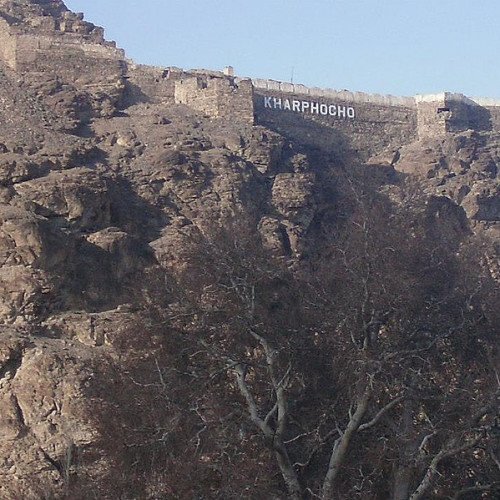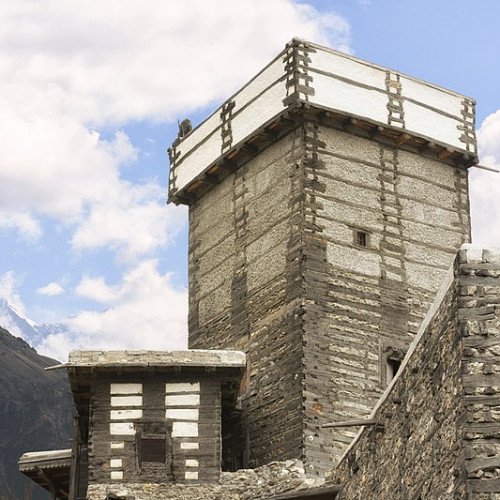Castles of "Pakistan" SKARDU FORT vs ALTIT FORT

SKARDU FORT
Skardu Fort or Kharpocho (Balti: کھر فچو; Urdu: قلعہ سکردو) means The king of Forts is a fort in Skardu city in Gilgit-Baltistan region of Pakistan. Australian mountaineer and film maker Greg Child writes that the fort is "perched above the junction of the rivers" and overlooks the Rock of Skardu. The fort was built by the king Ali Sher Khan Anchan in the end of the sixteenth century. General Zorawar Singh of the Dogra Rajput clan working under Maharaja Gulab Singh realized the importance of the fort's location in the town and so he occupied the fort. It was part of his many military campaigns to annex the areas of Baltistan to the princely state of Jammu and Kashmir. The fort was razed to the ground in 1857 under the guidance of Ranbir Singh. Mughal emperor Aurangzeb also tried to occupy the fort, which went in vain. During the First Kashmir War on 1947, Jammu and Kashmir State Forces were deployed inside the fort under the command of Lt. Col. Sher Jung Thapa. The Gilgit Scouts and rebel troops of the State Forces, under the command of Pakistan Army, laid siege to the fort. On 11 February 1948, the Pakistani forces battled with the Skardu garrison of the fort. After a six-hour-long battle between the two, the attackers retreated. They came again on 14 February directing "harassing fire into the fort". The siege lasted more than six months. Finally, having exhausted ammunition and rations, the Kashmir forces left the fort in small batches on 13 August 1948. The fort succumbed on the 14 August. All the remaining men were reportedly killed by the invaders, except for Col. Thapa and his Sikh orderly, who were taken prisoner. Skardu became part of the Pakistan-controlled Kashmir, eventually renamed Gilgit-Baltistan.
Statistics for this Xoptio

ALTIT FORT
Altit Fort (Urdu: قلعہ التیت) is an ancient fort at Altit town in the Hunza valley in Gilgit Baltistan, Pakistan. It was originally home to the hereditary rulers of the Hunza state who carried the title Mir, although they moved to the somewhat younger Baltit fort nearby three centuries later. Altit Fort and in particular the Shikari tower is around 1100 years old which makes it the oldest monument in the Gilgit–Baltistan. The fort has received the UNESCO Asia Pacific Heritage Award for Cultural Heritage Conservation in 2011. The word Altit means this side down and the area around the fort is inhabited by Burusho people. The people of Altit are said to belong to the White Huns, although not much research has gone into the matter. There are several theories about their origin but local indigenous origin holds much value among the people. It is also said that the present language Burushaski was brought here by the White Huns in 47 A.D but there is no link between Burushaski and any other language of today. According to the legend the first name for Altit village was Hunukushal, meaning the village of Huns. The Huns came from the Huang-Ho valley in China. The name later changed to Broshal, translated as a village of Bruchiski speakers. They were spirit worshipers as Shamanism was in practice and also followed Buddhism and Hinduism. In the 15th century Islam was introduced. Around 1830 in turn many converted to Ismailism. According to the local elders white Huns from the soldier of Alexander started human settlement in Altit when they were on way back from China. It is said that these were the ancestors of the Khanu Kuts tribe of Altit. Presently, majority of households of this tribe are living within the old cluster settlement known as Burum Khan. The Khunu kuts still has the status of Saath Guy; the privilege of starting any activity/event/work/festival within the village. On the other hand, people from Hussain kuts also claim to be the earlier settler in Altit. They claim that Hussain is modified from Hun. It is said that for centuries Hussain kuts remained as a ruling and strong tribe within the village. It is narrated that this tribe was strong and thus creating troubles for the Raja of Gilgit. Therefore, the Raja with the help of other tribes ordered mass killing of the people of this tribe. The origin of different tribes and sub-tribes reveals that people from different regions migrated to Altit and permanently settled down. Presently, the people of Altit belong to one of these four major tribes. These tribes are divided into Gutti. The origin of the sub-tribes may also be different from the major one.